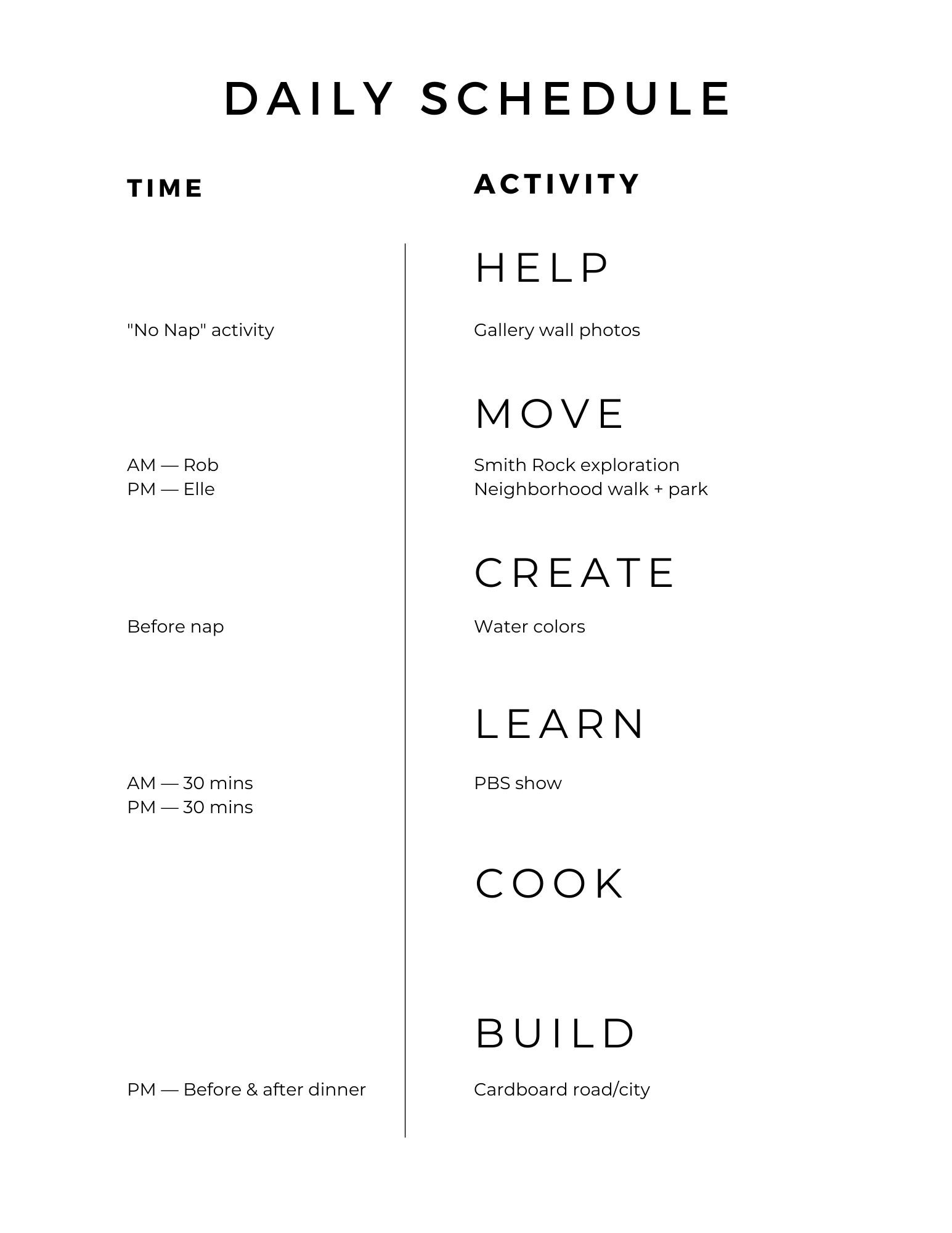

We advise creating multiple systems of reminders – a master calendar that is visible in your home, plus some phone alarms, works well. Thus, there should be a person who alerts all family members of activities and holds them accountable. You can have your whole family give their input on if the dynamic is healthy this way they will feel like they have agency in the activities later on.Īlthough your family should ideally be familiar with the tasks and their timing, the goal of a routine is to stick to it. This routine should include all normally scheduled activities as well as allotted times for concepts (playtime, relaxation time, alone time for parents/children, etc.). Don’t worry – nothing is final about this, but you have to start somewhere. Putting pen to paper (or fingers to keyboard) is daunting, but it also provides a great sense of accomplishment once you’ve done it.

While thinking through their schedule, what activities will help them do these things? Ask yourself what types of activities and associated time they respond best to, and schedule those around some of the tougher items so that there is balance in the schedule for everyone. One of the main reasons for creating a daily routine schedule for kids with autism is to empower their ability to relax, learn, and grow. These should give you a great baseline for more unique routine creation.Ģ) Define Goals for your child and family What time do you wake up and go to sleep? What time does your child wake up and go to sleep? If morning or nighttime transitions are difficult, do you need to address these specifically? Next go to meal times, school or education, and work. It is easier to start with the most commonly occurring and time-consuming activities in your daily life and use them as building blocks for more varied tasks. Part of creating a schedule for a day is assessing how your family’s time generally is used. However, if you break it down into smaller components, you should be able to address your child’s specific needs alongside yours.ġ) Analyze the structure of a typical day Sitting down to put together a daily schedule for your family can seem daunting. Step-by-Step Guide for Creating a Daily Autism Routine In combination with reduced stress, it will be easier to help learn new skills and tools for success in life. In turn, this relieves daily stress from them and allows them to focus on daily tasks.Īdditionally, children with ASD often have a natural affinity towards repetitive actions. Providing them a path to productive repetition is a great way to show that routines can be powerful in the right setting. For children with autism, routine is especially important because it helps separate chaotic components of the world that they may have difficulty with from their set routine. Research has shown that routine is beneficial for all children and humans in general. Why is a Routine Important for a Child with Autism? Read ahead if you’re looking to create your child’s daily schedule to help them thrive.

It is going to be specific to your family, your child, and their environment, but we have created step-by-step guidelines that have led families to success. We know it’s not always easy to decide which exercises, chores, and daily activities for kids should comprise this routine. Creating a daily routine schedule for your child is a great way to create comfort, a learning mechanism, and provide them with the best opportunity for consistent development. Children with autism thrive on routine, especially in their home habits and in recurring activities.


 0 kommentar(er)
0 kommentar(er)
